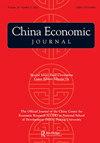Digitalization of cross-border payments
IF 2.3
Q1 ECONOMICS
引用次数: 3
Abstract
Integration of the international trade and financial systems accelerated and reached historically high levels during the 1990s and 2000s. However, cross-border payments have remained expensive, slow, opaque, and inaccessible to many, especially in lower income and emerging countries. Those hit harder are countries with a higher share of unbanked population, greater reliance on remittances, lower access to correspondent banks, and less liquid foreign exchange markets. Based on a sample of 112 countries, Bank for International Settlements (BIS) (2020) reports that the average total cost of a $200 bank-based cross-border remittance is over 10% of the remittance value. Remittances to developing countries exceeded US$550 billion in 2019 surpassing FDI and portfolio flows. At the same time, the share of adults without access to a bank account stands above 50% in parts of the developing world, such as SubSaharan Africa, North Africa and the Middle East (BIS, 2020). As a result, a majority of the population do not have access to banking services, including cross-border payments. These limitations have been widely recognized for some time, but not enough has been done to date. Countries tend to under-invest in solving issues of interoperability and in creating public goods available across borders – the international version of the collective action problem. We are living through a phase of unprecedented global drive to improve the efficiency of cross-border payments. The Group of Twenty (G20) has made enhancing cross-border payments a policy priority and the Financial Stability Board (FSB) has laid out a multiple stage roadmap to reach specific targets of achievements (FSB 2020a, 2020b; CPMI 2020). This drive in part reflects recent acceleration in the application of digital innovations. New digital technologies leverage the proliferation of cloud computing and mobile devices, explosion of big data on individuals and firms, advances in artificial intelligence, cryptography and the adoption of distributed ledger technology (DLT) such as blockchains. The strong complementarities between these technologies are giving rise to an impressive array of new applications touching on services from payments to financing, asset management, insurance, and advising. The possibility now looms that large technological companies (‘Big Techs’) and fintech startups may emerge as competitive alternatives to traditional financial intermediaries, markets, and infrastructures. The impetus has also come from the rise of digital currencies such as the prospect of Facebook’s Libra, which pledges to improve cross-border payments and promotes financial inclusion of the unbanked population (Adrian and Mancini-Griffoli 2019). The rise of global stablecoins such as the Libra could hark back to an era when the跨境支付数字化
国际贸易和金融体系的一体化在1990年代和2000年代加速并达到历史最高水平。然而,跨境支付仍然昂贵、缓慢、不透明,许多人无法获得,尤其是在低收入和新兴国家。受打击更严重的是那些没有银行账户的人口比例更高、更依赖汇款、进入代理银行的机会更少、外汇市场流动性更低的国家。根据112个国家的样本,国际清算银行(BIS)(2020)报告称,200美元的银行跨境汇款的平均总成本超过汇款价值的10%。2019年,对发展中国家的汇款超过5500亿美元,超过了外国直接投资和投资组合流量。与此同时,在撒哈拉以南非洲、北非和中东等发展中国家,无法使用银行账户的成年人比例超过50%(BIS,2020)。因此,大多数人口无法获得银行服务,包括跨境支付。一段时间以来,这些限制已经得到了广泛的认可,但迄今为止还做得不够。各国往往在解决互操作性问题和创造跨境公共产品方面投资不足,这是集体行动问题的国际版本。我们正处于一个前所未有的全球推动阶段,以提高跨境支付的效率。二十国集团(G20)已将加强跨境支付作为政策重点,金融稳定委员会(FSB)制定了多阶段路线图,以实现具体的成就目标(FSB 2020a、2020b;CPMI 2020)。这在一定程度上反映了最近数字创新应用的加速。新的数字技术利用了云计算和移动设备的激增、个人和公司大数据的爆炸、人工智能、密码学的进步以及区块链等分布式账本技术的采用。这些技术之间的强大互补性催生了一系列令人印象深刻的新应用程序,涉及从支付到融资、资产管理、保险和咨询等服务。现在,大型科技公司(“大型科技公司”)和金融科技初创公司可能成为传统金融中介机构、市场和基础设施的竞争替代品。这一动力还来自数字货币的兴起,比如脸书Libra的前景,该公司承诺改善跨境支付,并促进无银行账户人群的金融包容性(Adrian和Mancini Griffoli,2019)。Libra等全球稳定币的兴起可能让人回想起一个时代
本文章由计算机程序翻译,如有差异,请以英文原文为准。
求助全文
约1分钟内获得全文
求助全文

 求助内容:
求助内容: 应助结果提醒方式:
应助结果提醒方式:


